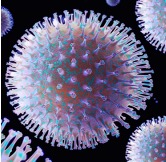The future prospects of cell
and gene therapy

Immune Deficiency
Role of Cell and Gene Therapy in Immune Deficiency
Cell and gene therapy have shown significant promise in treating various forms of immune deficiency, offering potential curative approaches by targeting the underlying genetic defects or by modulating immune responses. Here’s a detailed look at how these therapies are being applied:
- Severe Combined Immunodeficiency (SCID)
- Gene Therapy: SCID, often referred to as “bubble boy disease,” is caused by mutations in genes essential for immune cell development. Gene therapy has been successfully used to treat SCID by inserting a functional copy of the defective gene into hematopoietic stem cells (HSCs) from the patient. For example, ADA-SCID (caused by mutations in the ADA gene) has been treated using a viral vector to deliver the ADA gene to patient HSCs, restoring immune function
- Lentiviral Vectors: These are commonly used to deliver therapeutic genes into HSCs. Recent advancements have improved the safety and efficacy of these vectors, reducing the risk of insertional mutagenesis and enhancing gene expression stability
- X-linked Severe Combined Immunodeficiency (X-SCID)
- Autologous Gene Therapy: This approach involves collecting a patient’s own HSCs, correcting the defective IL2RG gene ex vivo, and reinfusing the modified cells. Clinical trials have shown that this method can lead to the development of a functional immune system in infants with X-SCID .
- CRISPR-Cas9: Gene-editing technologies like CRISPR-Cas9 are being explored to precisely correct the genetic mutations in X-SCID. This method holds promise for safer and more effective treatments by minimizing off-target effects.
- Chronic Granulomatous Disease (CGD)
- Gene Therapy: CGD is caused by mutations affecting the NADPH oxidase complex, essential for the microbial-killing function of phagocytes. Gene therapy using viral vectors to deliver a functional copy of the defective gene to patient-derived HSCs has shown promising results, with some patients achieving sustained remission and improved immune function.
- Allogeneic Stem Cell Transplant: While not a direct form of gene therapy, allogeneic stem cell transplant (using donor cells) is a curative approach for CGD. The introduction of gene therapy aims to provide a similar outcome using the patient’s own genetically modified cells, reducing the risks associated with donor compatibility.
- Wiskott-Aldrich Syndrome (WAS)
- Gene Therapy: WAS is characterized by mutations in the WAS gene, affecting immune cell function and platelet production. Gene therapy trials using lentiviral vectors to deliver a functional WAS gene into HSCs have shown success in restoring immune function and improving clinical symptoms in patients
- Primary Immunodeficiencies (PIDs)
- Broad Applications: Gene therapy is being explored for a range of other PIDs, including hyper-IgM syndrome, leukocyte adhesion deficiency, and others. The approach typically involves using viral vectors to correct specific genetic mutations in patient-derived HSCs.
- Ex Vivo Gene Editing: Ex vivo techniques, where cells are modified outside the body and then reinfused, offer a controlled environment to ensure precise gene correction and selection of successfully modified cells.
